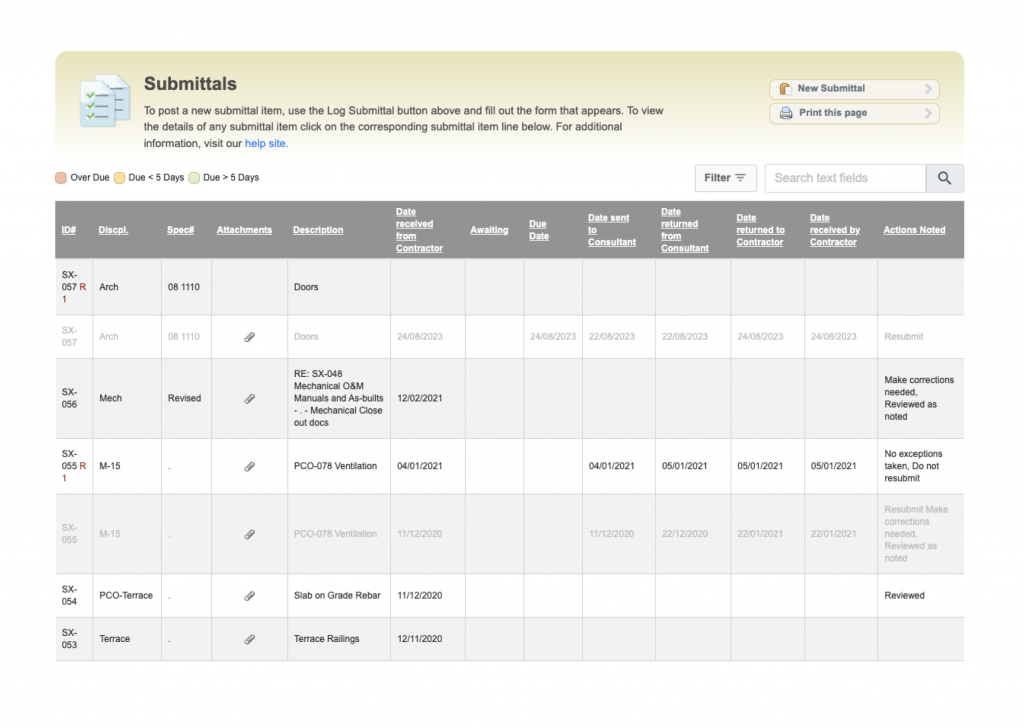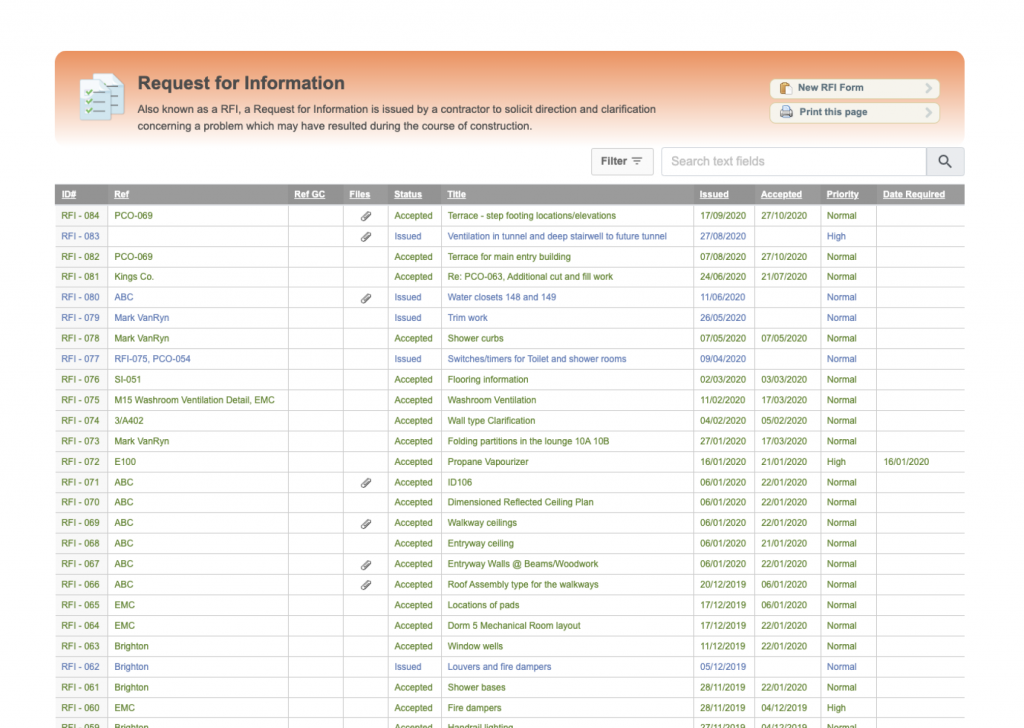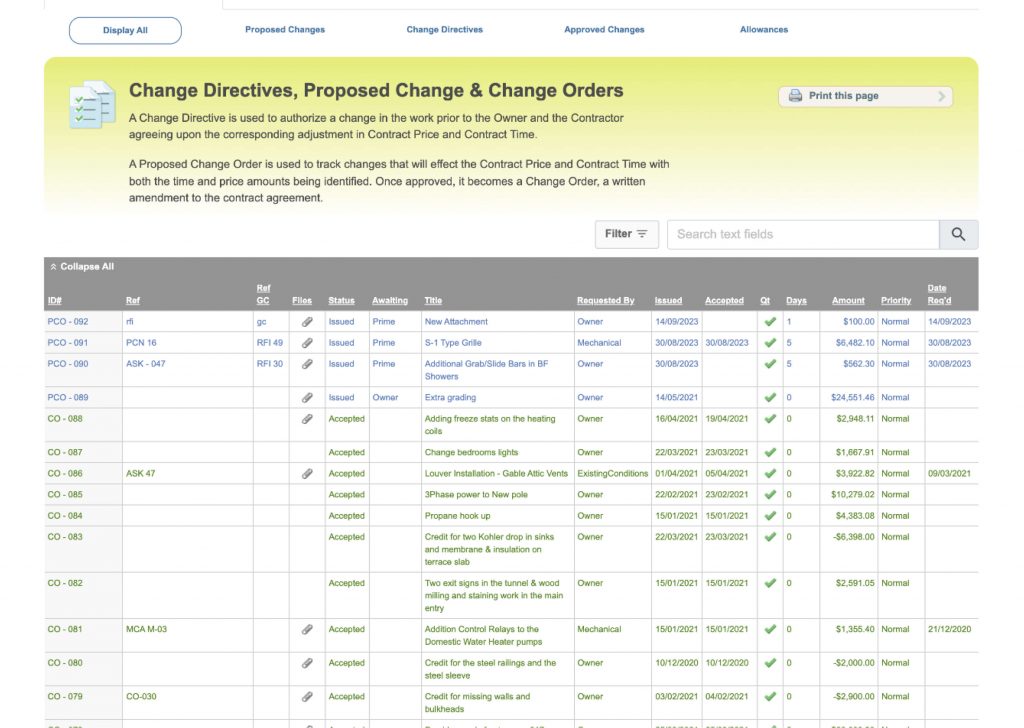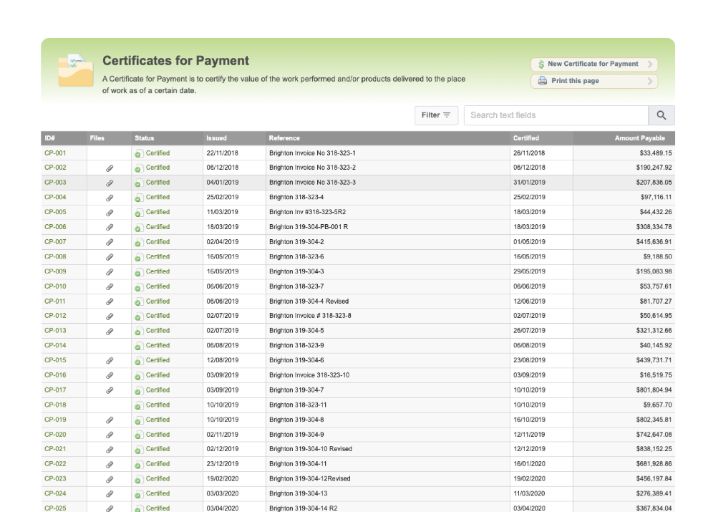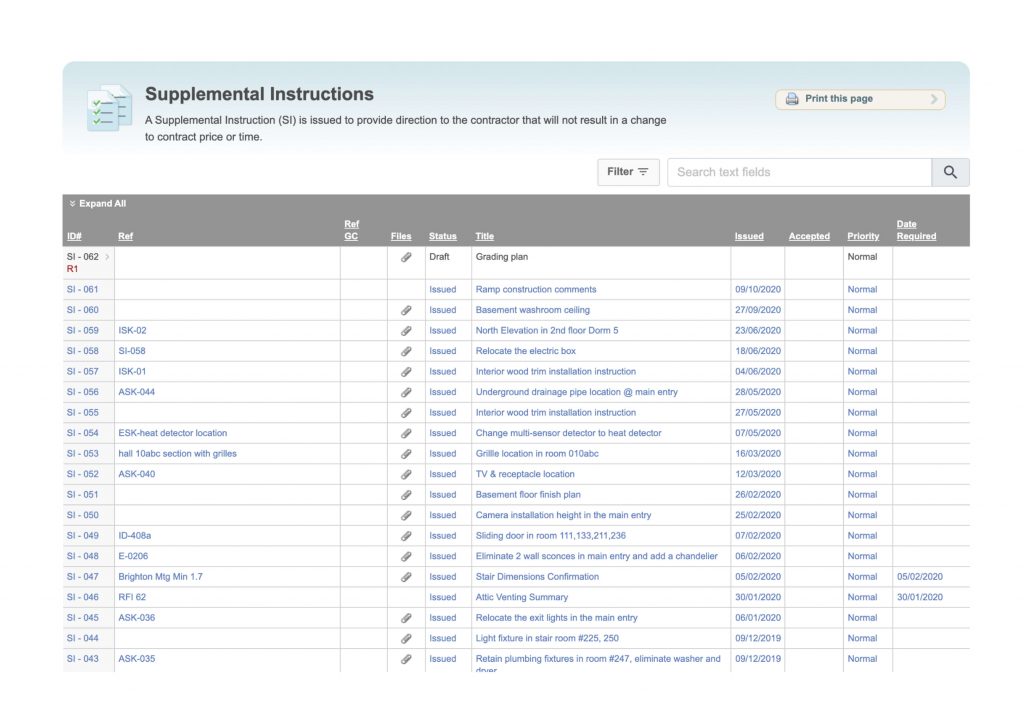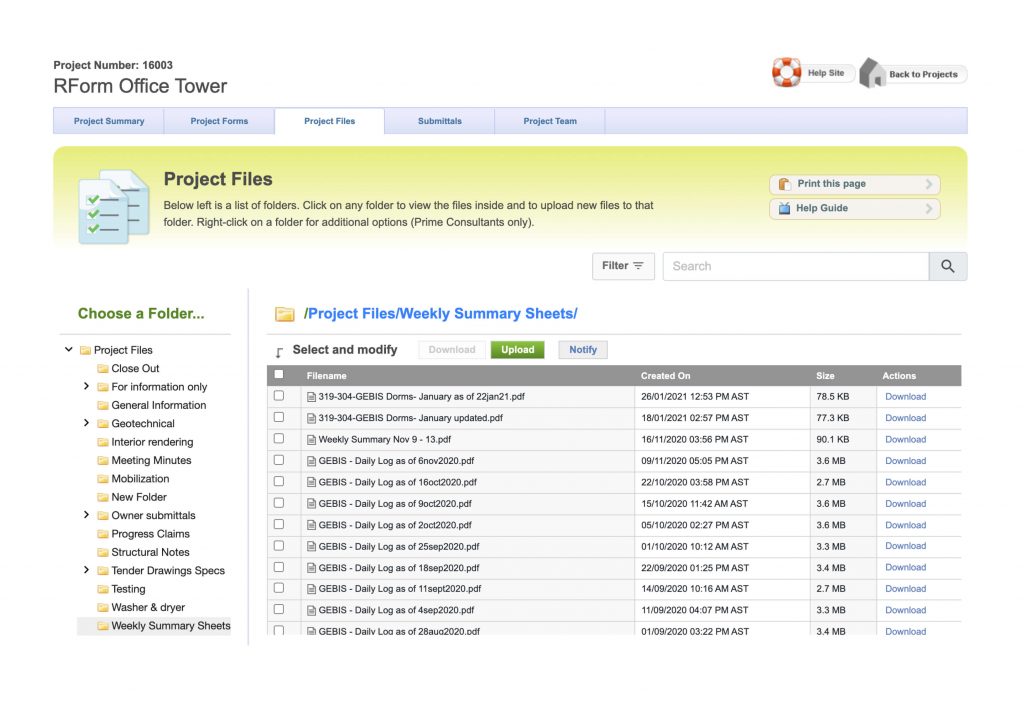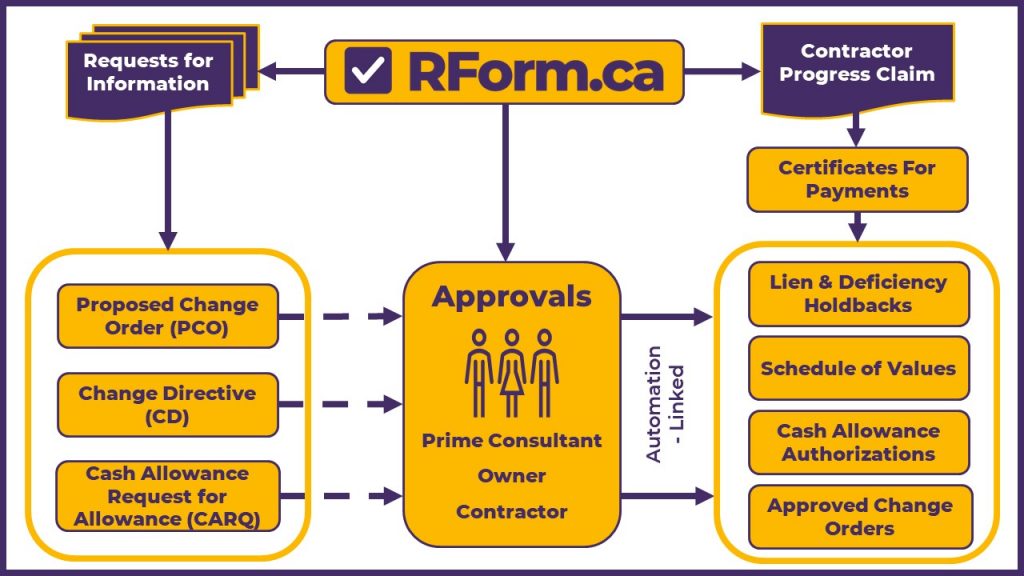Stop manually tracking payments and construction changes
Manually handling change order forms, schedules of values, and payment certifications can lead to mistakes and take a lot of effort. Automating and simplifying these tasks saves both time and money while maintaining accuracy and transparency.
Turn construction chaos into teamwork with automation
Handling submittals during construction can overwhelm and waste time, causing expensive delays and mistakes. RForm enhances teamwork among architects, contractors, and suppliers, transforming submittal processing.
Enhance your document control and mitigate risks
Storing all project documents in one place lets stakeholders quickly find, update, and monitor the latest versions, reducing the chance of losing documents. This central storage speeds up workflows and boosts communication between Contractors, Architects, Consultants, and Owners.
Watch how RForm can help
Take a closer look at these key construction contract administration software forms
Submittals and Transmittals
Request for information
Request for Information (RFI) Managing RFIs traditionally can consume precious time, introduce errors, and even…
Changes and Cash Allowances
Changes and Cash Allowances As an Architect, Engineer, or Contract Administrator you have to deal…
Schedule of Values and Certificates for Payment
Schedule of Values and Certificates for Payment Unlock the power of seamless construction administration with…
Supplemental Instructions
Project files and Document Management

No limits on project size, number of project team members or data storage.

